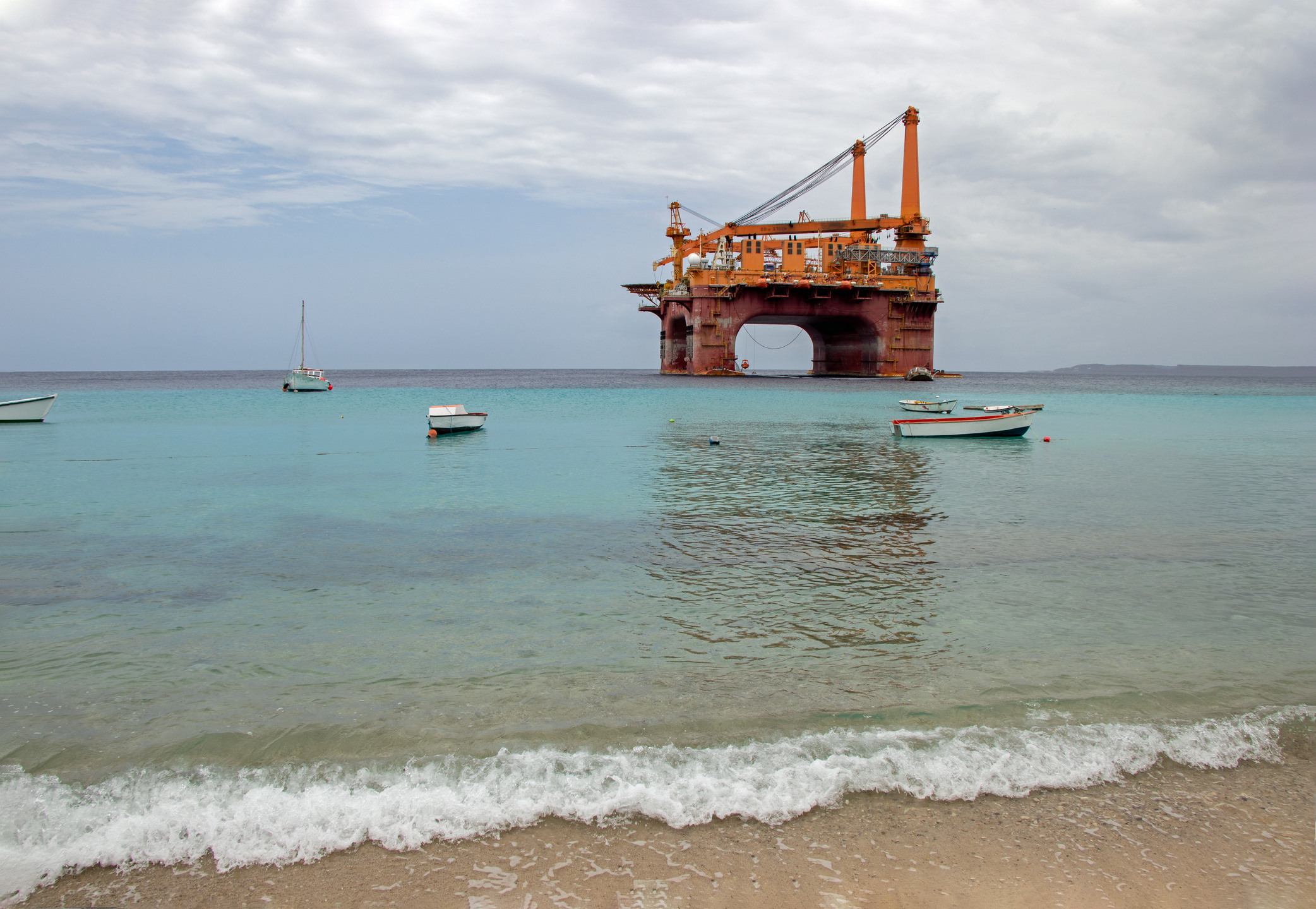Oil companies are crucial to the global economy. They provide fuels for transportation and power. They also supply the core ingredients of petrochemicals used to make products such as plastics, rubber, and fertilizer.

However, the oil industry is highly competitive and volatile. Profits and losses can swing wildly based on small shifts in demand or moves by petrostates such as Saudi Arabia and Russia, whose interests can run counter to those of the public companies in the industry. Supply and demand imbalances can cause huge fluctuations in oil prices. We saw that in early 2022, after Russia's invasion of Ukraine, which sent crude prices soaring into the triple digits for the first time in years.
Additionally, investors must consider the implications of climate change on the long-term prospects of oil and gas. The energy sector is undergoing a massive transition to renewable energy. Even so, there are opportunities in the oil patch. Here's a closer look at some of the top oil stocks and factors to consider before buying.
What are the top oil stocks to buy in 2025?
There are dozens of oil stocks. They run the gamut from pure-play exploration and production companies (E&Ps), midstream businesses, service providers, and refiners to integrated oil majors that do a little bit of everything. Investors have lots of options.
However, some oil stocks stand out as leaders in the sector.
| Name and ticker | Market cap | Dividend yield | Industry |
|---|---|---|---|
| ConocoPhillips (NYSE:COP) | $113.4 billion | 3.46% | Oil, Gas and Consumable Fuels |
| Devon Energy (NYSE:DVN) | $22.7 billion | 2.65% | Oil, Gas and Consumable Fuels |
| Enbridge (NYSE:ENB) | $103.5 billion | 5.68% | Oil, Gas and Consumable Fuels |
| ExxonMobil (NYSE:XOM) | $502.8 billion | 3.36% | Oil, Gas and Consumable Fuels |
| Phillips 66 (NYSE:PSX) | $51.7 billion | 3.70% | Oil, Gas and Consumable Fuels |
Here’s a closer look at these top oil stocks.
1. ConocoPhillips

NYSE: COP
Key Data Points
ConocoPhillips (COP -1.00%) is one of the largest E&P-focused companies in the world. It specializes in finding and producing oil and natural gas. It has operations in more than a dozen countries.
ConocoPhillips benefits from scale and access to some of the lowest-cost oil on earth, which includes significant exposure to the Permian Basin. It bulked up its position in that low-cost, oil-rich region in 2021 by acquiring Concho Resources and Shell's assets in the area. With average costs of about $40 per barrel and many of its resources even cheaper, it can make money in almost any oil market environment, enabling the company to generate lots of cash flow.
Given the uncertainty surrounding future oil demand, ConocoPhillips plans to return a significant portion of its free cash flow to investors in the coming years. It plans to pay a steadily growing dividend, repurchase shares, and pay a variable return of cash based on its excess cash.
Finally, the company complements its low-cost portfolio with a top-tier balance sheet. ConocoPhillips routinely boasts one of the highest credit ratings among E&P companies, backed by a low leverage ratio for the sector and lots of cash. These factors make it one of the safest E&P investments.
2. Devon Energy

NYSE: DVN
Key Data Points
Devon Energy (DVN -0.39%) is a U.S.-focused E&P company. It has diversified operations across several low-cost, oil-rich basins. The company's diversification enables it to produce lots of low-cost oil and natural gas, which allows it to generate plenty of cash.
The company launched an industry-first, fixed-plus-variable dividend framework in 2021. It pays out as much as 50% of its excess cash flow each quarter via variable dividend payments after funding its fixed base dividend and capital expenses. Devon uses the rest of its excess cash to strengthen its balance sheet and repurchase shares.
Devon's dividend strategy makes it an enticing option for income-focused investors. They can collect a steady base dividend that's sustainable throughout the oil price cycle and have the potential to earn significant payments during periods of high prices.
Dividends Per Share
3. Enbridge

NYSE: ENB
Key Data Points
Enbridge (ENB -0.04%) operates one of the biggest oil pipeline systems in the world. It transports 30% of the oil produced in North America. Enbridge also has an extensive natural gas pipeline system, a natural gas utility business, and renewable energy operations.
Enbridge's pipeline operations generate stable cash flow backed by long-term contracts and government-regulated rates. That gives it the cash to pay a high-yield dividend while also investing to expand its energy infrastructure operations.
Enbridge has made significant investments in recent years in infrastructure geared toward cleaner energy, including offshore wind energy in Europe and hydrogen. These investments position Enbridge for the future of energy, even as it remains vital to supporting the oil market's current needs.
4. ExxonMobil

NYSE: XOM
Key Data Points
As one of the largest oil companies on the planet, ExxonMobil (XOM -0.17%) is a fully integrated supermajor. It operates in every segment of the oil and gas industry, including E&P, midstream, petrochemical manufacturing, refining, and, even further downstream, marketing refined and petroleum products to customers.
ExxonMobil has focused its recent efforts on reducing its business costs and boosting efficiency. These investments are beginning to pay off. The company has significantly lowered its oil production costs over the past couple of years by focusing on its highest-return assets while also taking steps to better leverage its massive scale, enabling it to generate lots of cash flow when oil prices are much higher.
This cash flow should continue to protect ExxonMobil's dividend and its status as a Dividend Achiever, or a stock that has increased its payout for 10 consecutive years. Given the growth of renewables, many investors are choosing to avoid oil stocks entirely. However, ExxonMobil is making investments in lower-carbon fuel sources, including carbon capture and storage, as well as biofuels, which may enable it to continue supplying the economy with fuel for years to come.
In 2023, ExxonMobil acquired Pioneer Natural Resources. The deal solidified the company's standing as one of the lowest-cost producers for the next decade to come.
5. Phillips 66

NYSE: PSX
Key Data Points
Phillips 66 (PSX -0.55%) is one of the leading oil refining companies, with operations in the U.S. and Europe. It also has investments in midstream operations and in petrochemicals via its CPChem joint venture with Chevron (CVX +0.05%). Its marketing and specialties business distributes refined products and manufactures specialty products such as lubricants.
Thanks to its large-scale, vertically integrated operations, Phillips 66 is among the lowest-cost refiners in the industry. This is the result of its leveraging its integrated midstream network to obtain the lowest-cost crude for refining and petrochemical feedstocks, as well as its investments in projects that give it higher margins on its products.
Phillips 66 also boasts a strong financial profile, which includes an investment-grade balance sheet with very manageable debt. It also has lots of cash on hand. Its low debt and high cash reserves mean it has ample capital to invest in expansion projects, including renewable fuels.
The company has been a dividend growth superstar and a share buyback dynamo over the past decade. The company's focus on making smart investments and returning cash to investors should enable Phillips 66 to continue enhancing shareholder value in the coming years.
Types of oil stocks
There are a number of subsectors inside the oil business.
- Exploration and production (E&P) stocks: These are the companies that find and extract hydrocarbons.
- Oilfield services stocks: These are companies that provide support, equipment, and services to oil and gas exploration and production companies. Services include drilling, seismic testing, well maintenance, and equipment manufacturing.
- Refining stocks: These are companies that process crude oil into usable products like gasoline, diesel, and jet fuel.
- Integrated oil company stocks: These are companies that operate across the entire oil and gas value chain, including exploration, production, transportation, refining, and marketing the finished product.
- Master limited partnership (MLP) stocks: These are publicly traded partnerships that own and operate energy infrastructure assets, such as pipelines, storage facilities, and refineries. A key feature is their pass-through tax status, which avoids corporate-level income tax, though investors are taxed on their share of the income.
How to analyze oil stocks
The oil industry is inherently risky for investors. Although each segment of the industry has a specific set of risk factors, the overall oil business is both cyclical and volatile.
Oil demand generally tracks economic growth. A robust economy can support rising oil prices and oil producer profitability. However, geopolitics and capital allocation also play crucial roles in the industry.
The world's largest oil-exporting nations include members of OPEC (Organization of the Petroleum Exporting Countries), a cartel that works to coordinate members' oil policies. OPEC's actions can significantly affect the price of oil. It can withhold supply to push prices higher or increase its output to drive them lower. OPEC has wielded its power over the years, causing massive fluctuations in oil prices.
Meanwhile, oil companies that operate independently of OPEC can also have an impact on oil prices. If they allocate too much capital to new projects, they can cause an oversupply and weigh on prices. If they hold back too much, they can cause prices to surge. Since oil and gas assets are developed over a long time, companies cannot quickly increase their supplies in response to favorable market conditions.
Given the volatility of oil prices, an oil company must have three crucial characteristics to survive the industry's inevitable downturns:
- A strong financial profile with an investment-grade bond rating, significant amounts of cash on hand or ample access to affordable credit, and manageable, well-structured debt maturities.
- Low costs of operations or relatively stable cash flow streams. E&P companies need to be able to profitably sustain operations at oil prices of less than $40 a barrel, while midstream companies should get more than 85% of their cash flow from steady revenue sources such as fee-based contracts. Downstream companies should have operating costs below the industry average.
- Diversification. Oil companies should operate in more than one geographical region or be at least partially vertically integrated by engaging in several different activities.
Related investing topics
Benefits and risks of investing in oil stocks
No investment is without risk. Investors should understand both the upside and the concerns before jumping into the oil patch.
Energy markets are notoriously cyclical, and oil is extremely sensitive to supply and demand trends. Even a slight imbalance between supply and demand can cause the oil market to go haywire.
- When times are good and the demand for energy is high, prices tend to go up. Investors can also benefit if there are disruptions to supply that cause prices to rise.
- But when demand softens or supply expands, oil prices tend to move dramatically lower. That can lead to periods where younger, less-established companies run into trouble and have to quickly raise capital or face a liquidity crunch.
Because of this dynamic, investors need to be careful when choosing oil stocks. They should focus on companies that can survive rough patches since they'll be better positioned to thrive when markets turn healthy again.
How to invest in oil stocks
- Open your brokerage app: Log in to your brokerage account where you handle your investments.
- Search for the stock: Enter the ticker or company name into the search bar to bring up the stock's trading page.
- Decide how many shares to buy: Consider your investment goals and how much of your portfolio you want to allocate to this stock.
- Select order type: Choose between a market order to buy at the current price or a limit order to specify the maximum price you're willing to pay.
- Submit your order: Confirm the details and submit your buy order.
- Review your purchase: Check your portfolio to ensure your order was filled as expected and adjust your investment strategy accordingly.
Common mistakes to avoid when investing in oil stocks
Oil is a cyclical commodity. Many of these companies look like great investments when oil prices are high, but less so when prices fall. One common mistake investors can make is ignoring oil price trends and getting an unpleasant decline as a result.
Other common mistakes to avoid:
- Inadequate diversification: Never put too much of your nest egg into one company or one type of company, especially if it is in a cyclical sector.
- Chasing yields: Some stocks look like they pay eye-watering dividends. Before buying in, you should make sure that the dividend is sustainable.
- Timing the market: Although oil prices do ebb and flow, strong companies can outperform over time. Trying to guess the future price of oil, and jumping in and out of a stock based on those predictions, will likely lead to underperformance compared to just sticking to long-term investments in quality companies.


